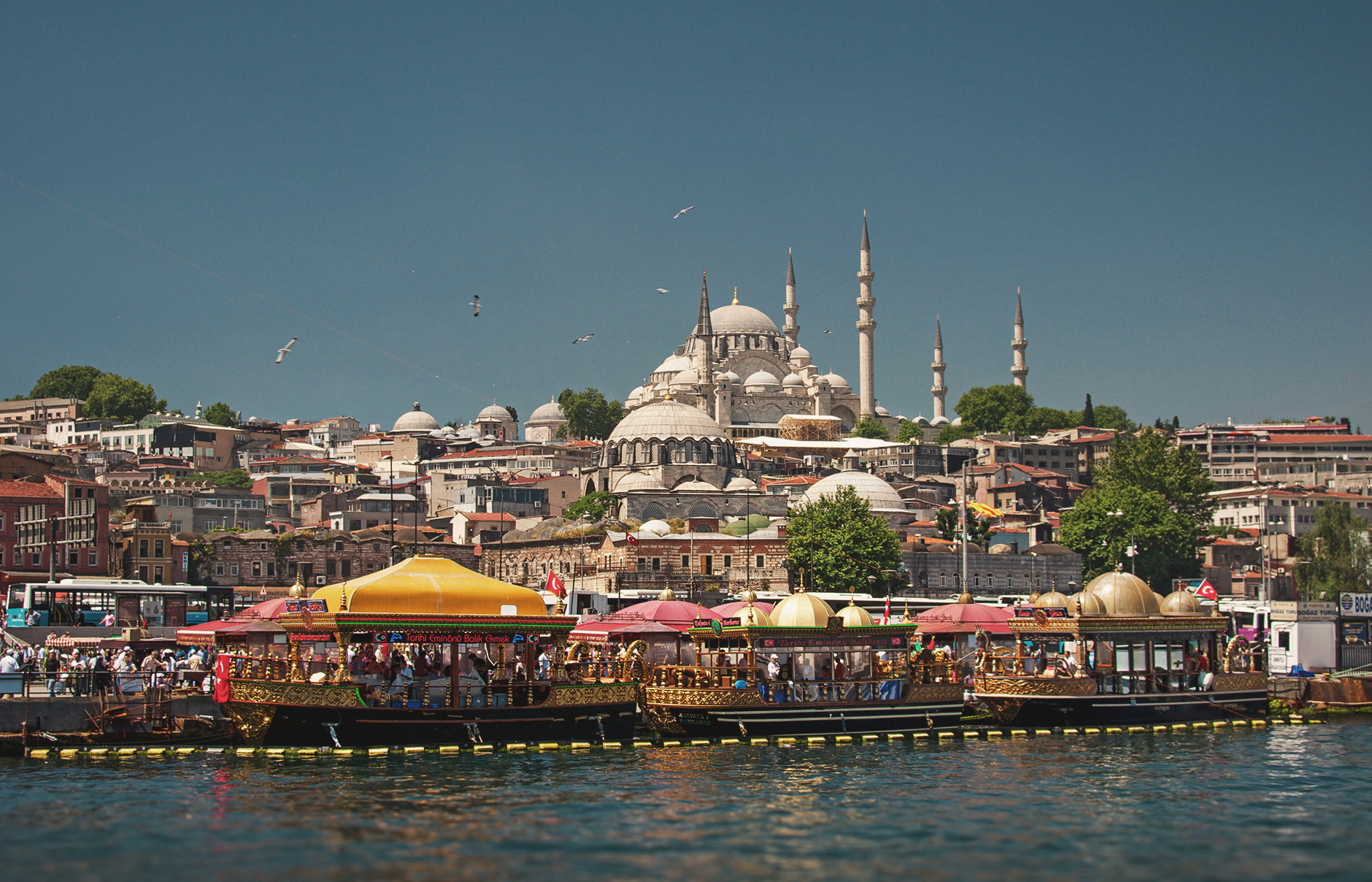

Here are the top things to do in Istanbul, capturing the city’s energy, beauty, and contradictions—all the moments that make you realize there’s nowhere else quite like it. Whether you’re here for a weekend or a week, the city will pull you in fast. Istanbul lives and breathes history, flavor, and chaos in a beautiful balance.
→ Wondering where to stay? Explore our curated collection of The Best Boutique and Luxury City Hotels in Istanbul — from palatial Ottoman retreats to design-forward boutique stays on the Bosphorus.
*This post contains affiliate links from which we may earn a commission, at no extra cost to you.
All photos in this post are by Laskowski & Zadros. © TravelPlusStyle.com.
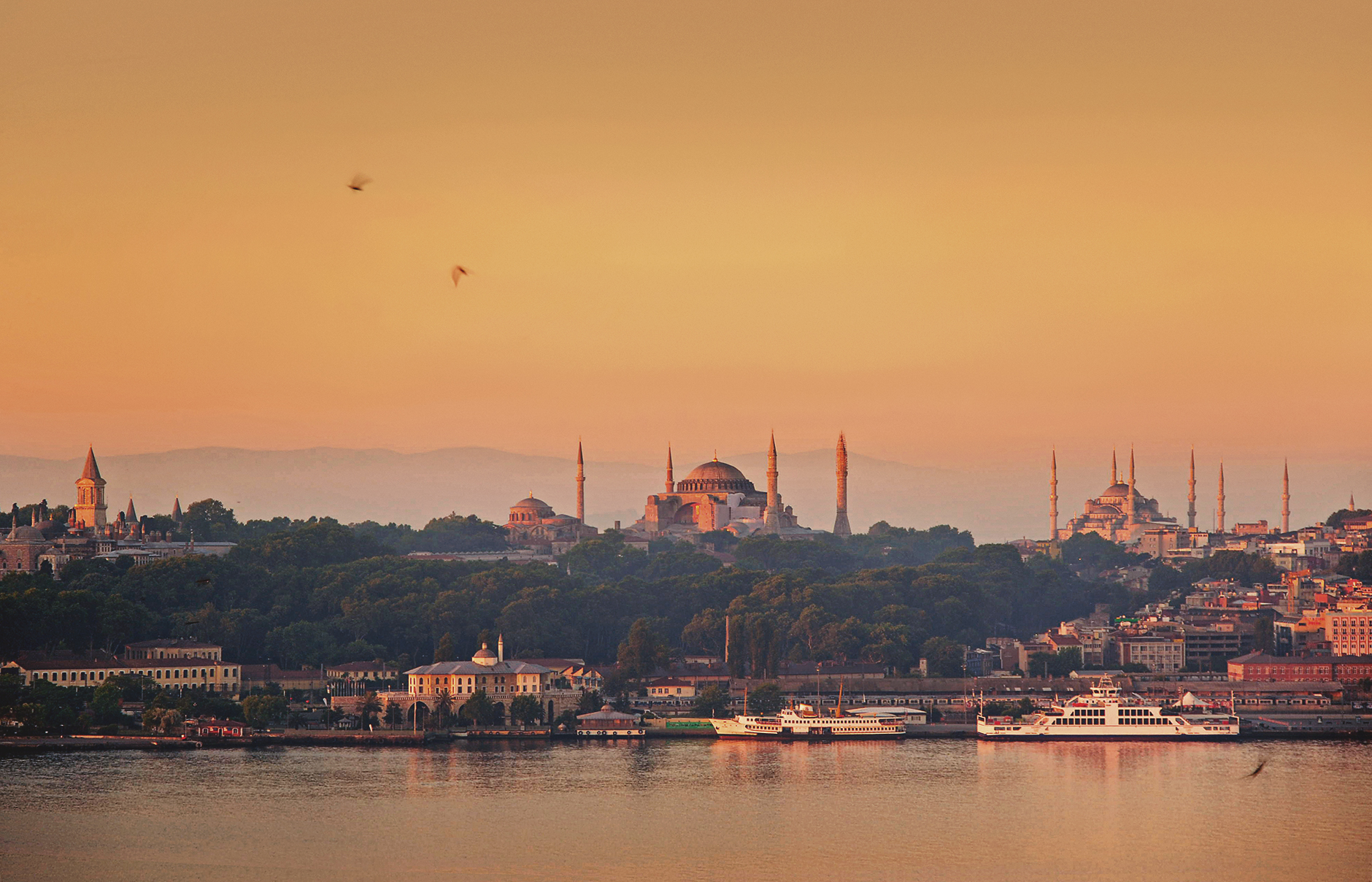
The soul of Istanbul begins here.
“All other cities are doomed, but I imagine that as long as people exist, Constantinople will exist.”—Petrus Gyllius
Meaning “God’s Wisdom” in ancient Greek, the famous temple of Hagia Sophia is a stunning witness to Istanbul’s past splendour. Built in 537, when the city was still known as Constantinople, this architectural masterpiece has stood for more than 1,500 years — surviving invasions, earthquakes, and transformations of faith, while watching empires rise and fall.
Once the world’s largest cathedral, later a mosque, and now again a functioning mosque open to visitors, Hagia Sophia invites you to gaze up at its monumental dome and trace the faded mosaics that whisper stories of Byzantine emperors and Ottoman sultans. Book your skip-the-line Hagia Sophia ticket here.
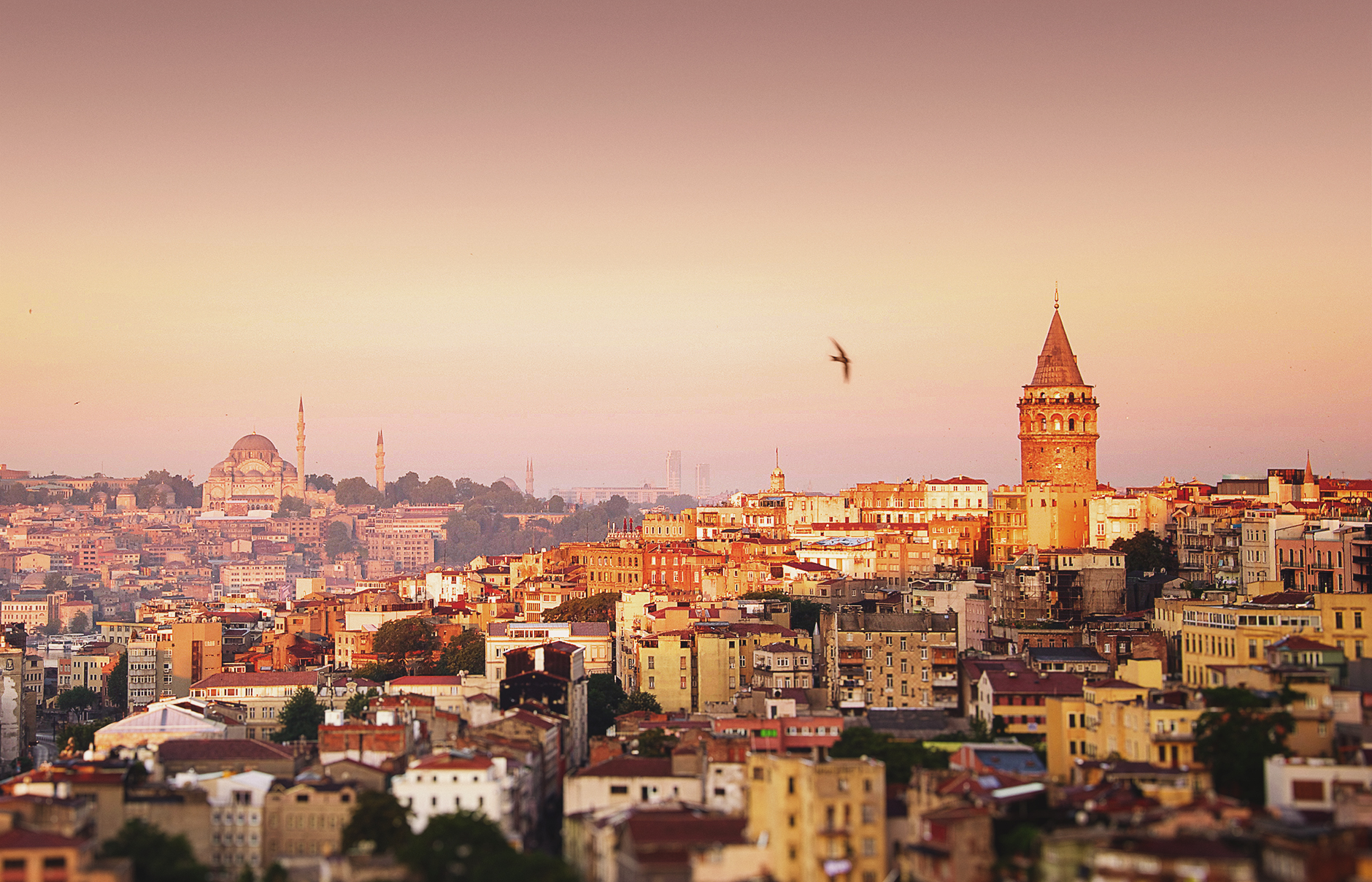
“If one had but a single glance to give the world, one should gaze on Istanbul.” — Alphonse de Lamartine
Rising above the skyline since 1348, the Galata Tower remains one of Istanbul’s most striking landmarks. Once the tallest structure in the city at 66.9 meters, this medieval Genoese watchtower guarded the harbor of the Golden Horn and still watches over Galata and Karaköy today. Climb its spiral stairs to the observation deck, where Istanbul unfolds in every direction — the domes and minarets of Sultanahmet, the shimmering Bosphorus, and the bridges linking Europe and Asia. Arrive early to beat the crowds, or just before sunset when the skyline glows copper and the city hums below. It’s one of Istanbul’s best photo spots.
Skip the queues — reserve your ticket online here.
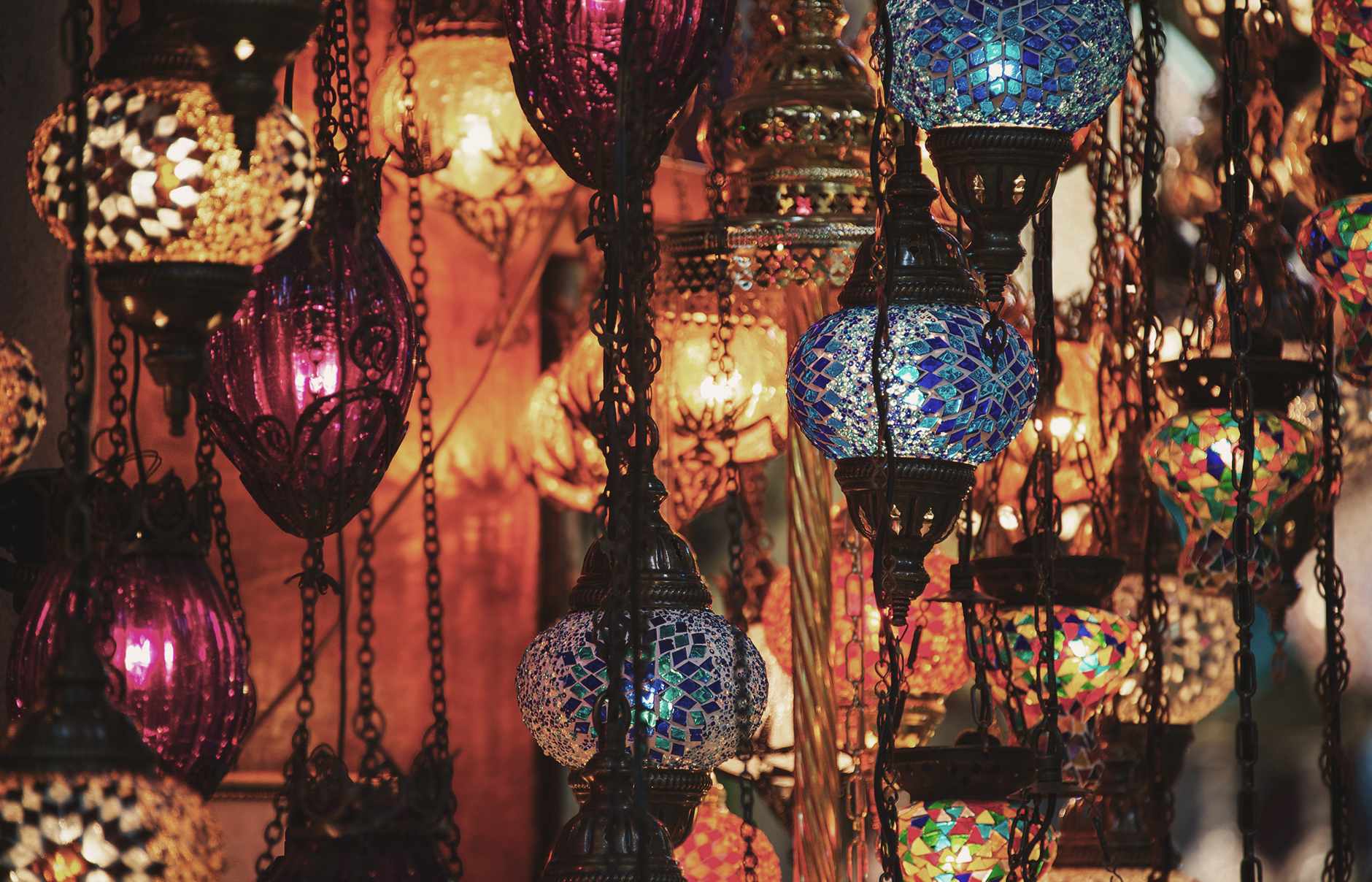

The best stays in Bodrum
Welcome to a world within a world — the Grand Bazaar, one of the oldest and largest covered markets on Earth. Sprawling since the 15th century, this massive place of commerce has been operating continuously for over 500 years.
Across more than 60 covered streets, you’ll find around 5,000 shops selling everything from handwoven carpets, leather goods, and silver jewelry to mosaic lamps, incense, spices, and the famed Turkish sweets. It’s a kaleidoscope of colors, scents, and sounds — a sensory experience like no other.
Go bargain hunting, or simply sit with a cup of Turkish tea or strong Turkish coffee and watch the crowds hurry by. The real charm lies in the art of negotiation — smile, chat, and bargain gently; it’s all part of the experience.
Arrive early (before 10 a.m.) or in the late afternoon for a calmer pace. To make the most of your visit, consider a guided bazaar tour (book here) — locals can help you uncover artisan workshops and family-run stalls hidden beyond the tourist trail.

Few places capture Istanbul’s rhythm quite like the Galata Bridge, arching over the Golden Horn between the old city and Beyoğlu. Locals cast fishing lines from dawn to dusk while ferries slide below, horns echoing between minarets. Stop halfway for sweeping views of Topkapi Palace, Süleymaniye Mosque, and the Galata Tower glimmering in the sun.
Beneath the bridge, seafood cafés sizzle with the scent of balık ekmek — Istanbul’s signature fish sandwich. Whether you walk, linger for photos, or join locals for tea by the waterfront, this crossing remains one of the most evocative snapshots of daily life in Istanbul.
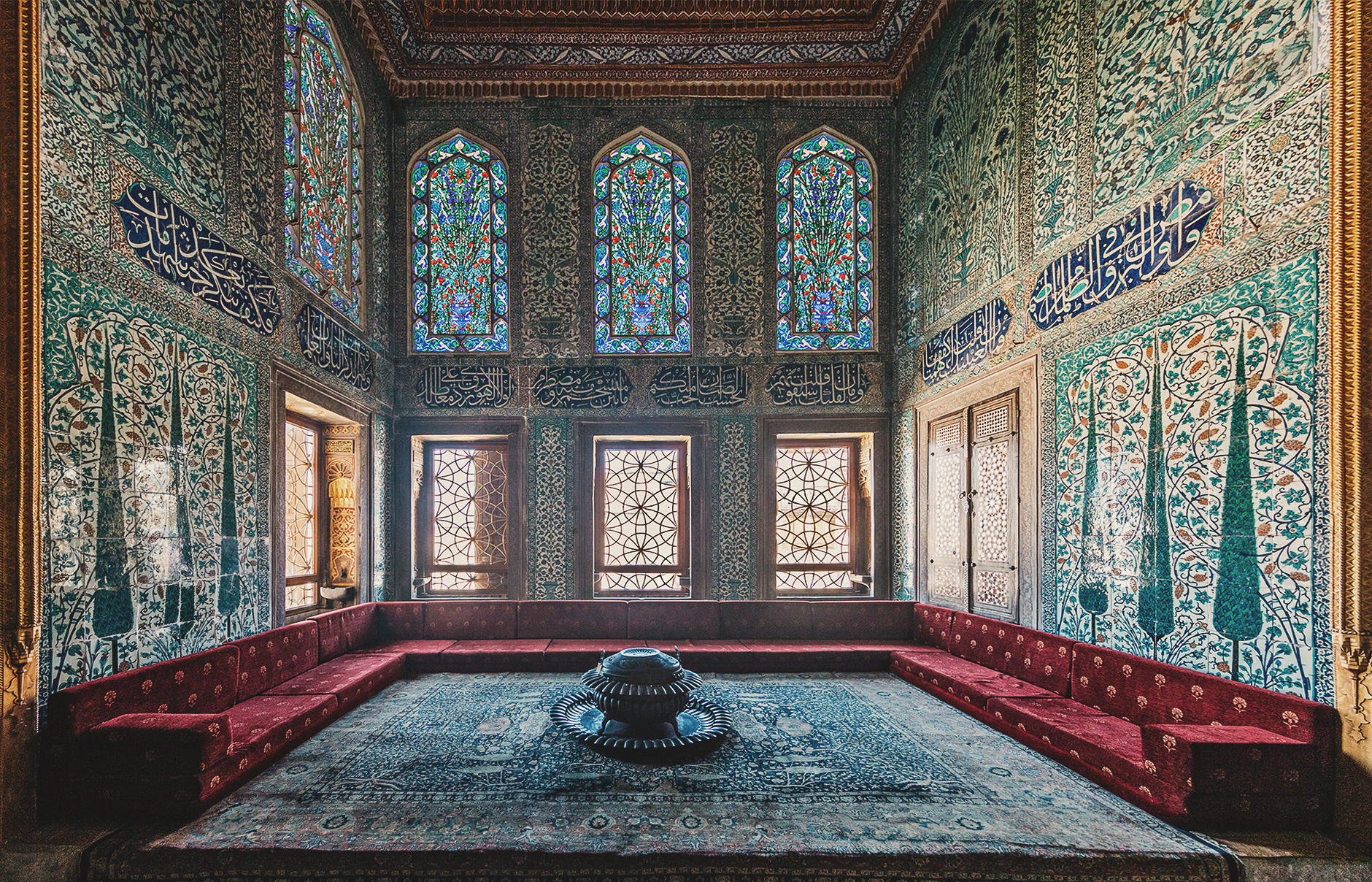
The Topkapi Palace is more than a museum — it’s a city within a city. Once the heart of the Ottoman Empire, it was home to generations of sultans who ruled over three continents. Today, its ornate courtyards, lush gardens, and glittering treasuries offer a glimpse into royal life.
Wander through tiled halls and hidden chambers where sultans lived surrounded by poets, concubines, and intrigue. The Harem is especially captivating — lavish, intimate, and full of whispers. Admire emerald-studded daggers and jeweled thrones, then step onto the terrace overlooking the Sea of Marmara. Every courtyard feels like a chapter from a golden empire.
For a seamless visit, skip the line with a fast-track ticket (book here).
Facing Hagia Sophia across Sultanahmet Square, the Blue Mosque — officially the Sultan Ahmed Mosque — is one of Istanbul’s most iconic sights. Built between 1609 and 1616 for Sultan Ahmed I, it remains a masterpiece of Ottoman architecture.
Step inside to see why it’s called the Blue Mosque: over 20,000 hand-painted İznik tiles in rich shades of blue cover its walls and domes, glowing under the light from 200 stained-glass windows. Six elegant minarets rise above, giving the mosque its distinctive skyline.
The mosque is still active, so visitors are welcome outside prayer times. Entry is free, but dress modestly — shoes off, and women should cover their heads and shoulders. Visit early or late in the day for softer light and smaller crowds.
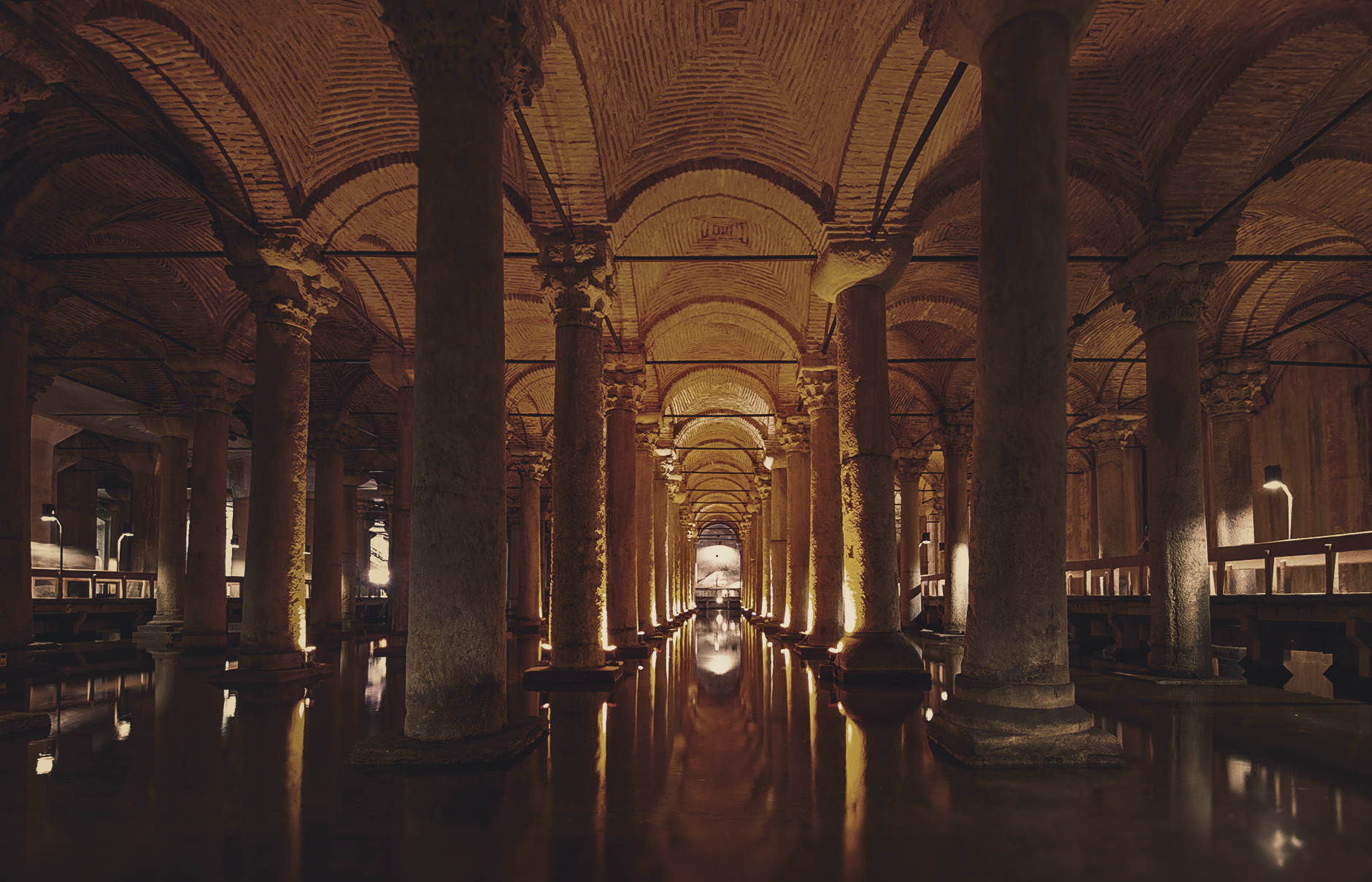
Hidden beneath Sultanahmet’s bustling streets lies one of Istanbul’s most atmospheric sights — the Basilica Cistern, built in the 6th century by Emperor Justinian. This vast underground chamber once stored the city’s water supply, fed through aqueducts from distant reservoirs.
Rows of massive marble columns rise from dark, mirror-like water — many repurposed from earlier Roman ruins, a reminder of how Istanbul (then Constantinople) was built layer upon layer atop its own history. As you wander along the raised walkways, you’ll hear the echo of dripping water and see the famous Medusa heads, tucked in a shadowed corner, their faces turned sideways — silent relics of the fallen Roman Empire. Reserve Basilica Cistern skip-the-line ticket here.
“ ‘Life can’t be all that bad,’ I’d think from time to time. ‘Whatever happens, I can always take a long walk along the Bosphorus.’ ”― Orhan Pamuk
To truly know Istanbul, you have to taste it. The city’s culinary landscape is a love letter to its history — from Ottoman feasts to street snacks.
Start your day with menemen, a rich, spicy scramble of eggs, tomato, and peppers. Grab a simit — the sesame-crusted Turkish bagel — from a street vendor, pair it with strong Turkish tea, and watch the world go by. Don’t miss meze spreads, kebabs, or börek fresh from the oven. Sit down for manti (Turkish dumplings) and dolma (stuffed vegetables) at a neighborhood lokanta, where locals gather for homestyle dishes. Finish with Turkish delight, baklava, and a strong cup of Turkish coffee.
Some of the best food experiences lie off the tourist trail — head to Cihangir, Kadıköy, or Beşiktaş, where cozy, family-run eateries with no frills serve authentic Turkish flavors full of soul.

To glimpse the city’s creative pulse, wander through its most character-filled neighbourhoods. In Karaköy, Ottoman-era façades now buzz with art galleries, designer boutiques, and cool cafés tucked into the steep streets surrounding the Galata Tower, making it one of Istanbul’s most creative corners.
Cihangir, just up the hill, channels bohemian charm — think leafy streets, vintage stores, art galleries, and relaxed eateries filled with writers and locals, all with terrace views over the Bosphorus.
In Balat, pastel houses lean over narrow cobbled alleys, street cats stretch in doorways, and locals sip tea outside tiny antique shops, while old synagogues and churches whisper stories of Istanbul’s multicultural past.
Stray beyond the tourist trail and wander without a plan through the maze of streets: follow the aroma of coffee or the scent of grilled köfte, and you’ll find the Istanbul locals love — spontaneous, stylish, deeply alive, and endlessly surprising.
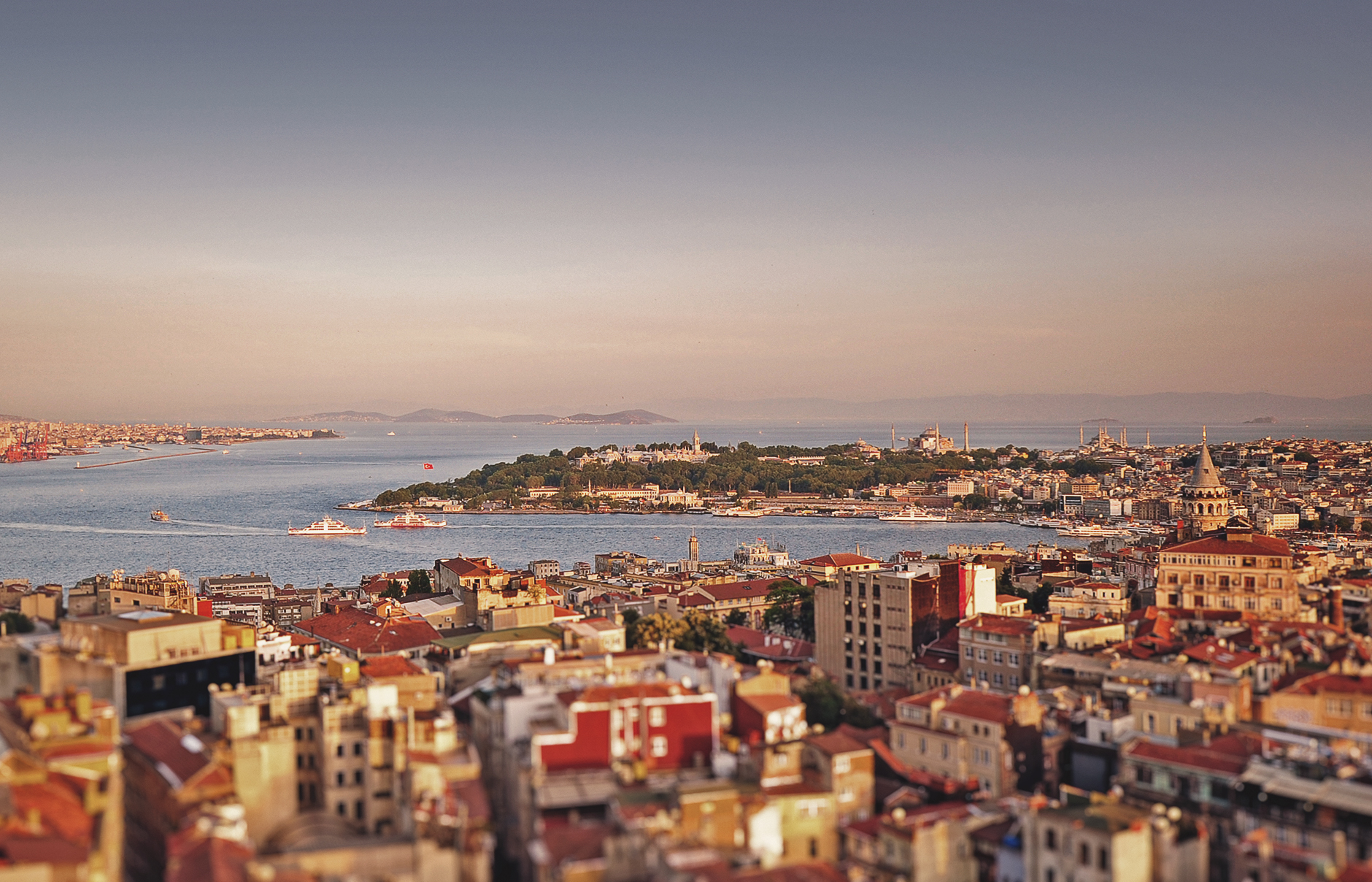
When the sun begins to dip behind the minarets, Istanbul transforms. Follow the music drifting from terraces in Beyoğlu or Sultanahmet and find a rooftop perch above the city. Order a glass of raki — or a couple of mojitos at one of Istanbul’s chic rooftop bars like Mikla, a cosmopolitan sky-high hideaway with one of the best skyline views in town. Just get there early; it’s a popular spot. Feel the sea breeze as domes glow copper, ferries shimmer on the Bosphorus, and the muezzins’ calls rise in harmony — a moment that feels both cinematic and timeless. For dinner, head to Neolokal or Spago, where skyline views meet refined Turkish cuisine.
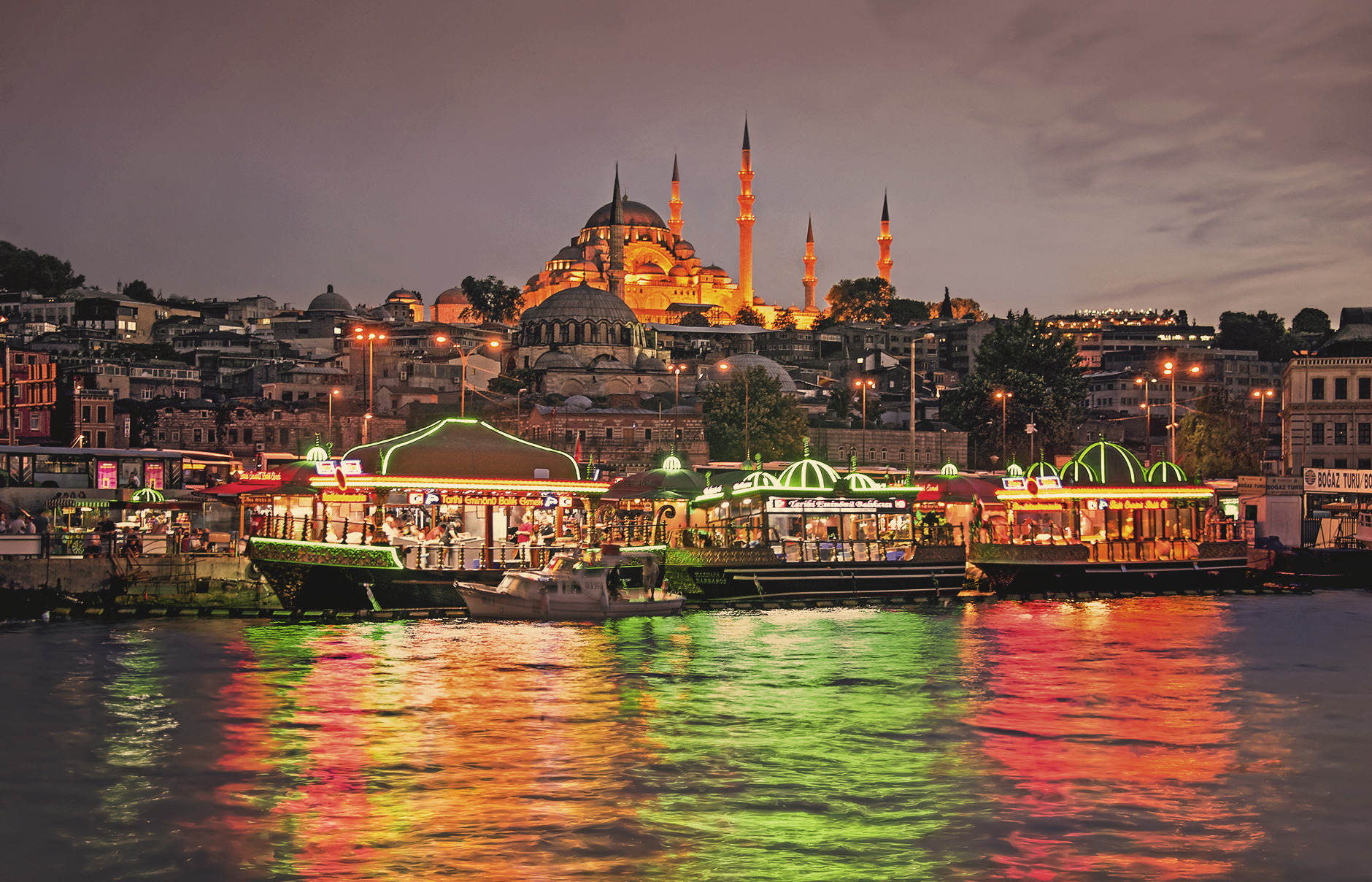
Last but not least—if by this time you weren’t completely enchanted with Istanbul, an evening stroll in this ancient metropolis should invoke the romantic side in the most practical types.
As night falls, lanterns glow, fishermen linger on the Galata Bridge, and the city hums in a soft, timeless rhythm. Wander through the lively streets of Karaköy, Galata, or Sultanahmet, where meyhanes spill laughter onto cobbled lanes, rooftop bars sparkle above, jazz clubs pulse with life, and ferries glide across the darkened Bosphorus.
This is Istanbul after dark — sensual, spontaneous, and filled with the kind of energy that lingers long after midnight.

From Ottoman grand dames to uber-chic luxe newcomers
When is the best time to visit Istanbul? Spring (April–June) and autumn (September–November) offer mild weather and fewer crowds, perfect for exploring both the city’s landmarks and hidden neighborhoods.
How many days do you need in Istanbul? Spend at least three full days to explore the main sites; five to seven for a more relaxed pace that includes hammams, hidden neighborhoods, and ferry rides.
How do I book tickets for Istanbul’s top attractions? It’s best to book online to skip the queues — especially for Hagia Sophia, Topkapi Palace, Galata Tower, and Bosphorus cruises.
Where to stay in Istanbul? For first-time visitors, Sultanahmet is ideal for sightseeing; Beyoğlu offers nightlife and rooftop bars, while Cihangir and Karaköy suit those who prefer boutique hotels and local vibes.
*All photos in this post are by Laskowski & Zadros. © TravelPlusStyle.com
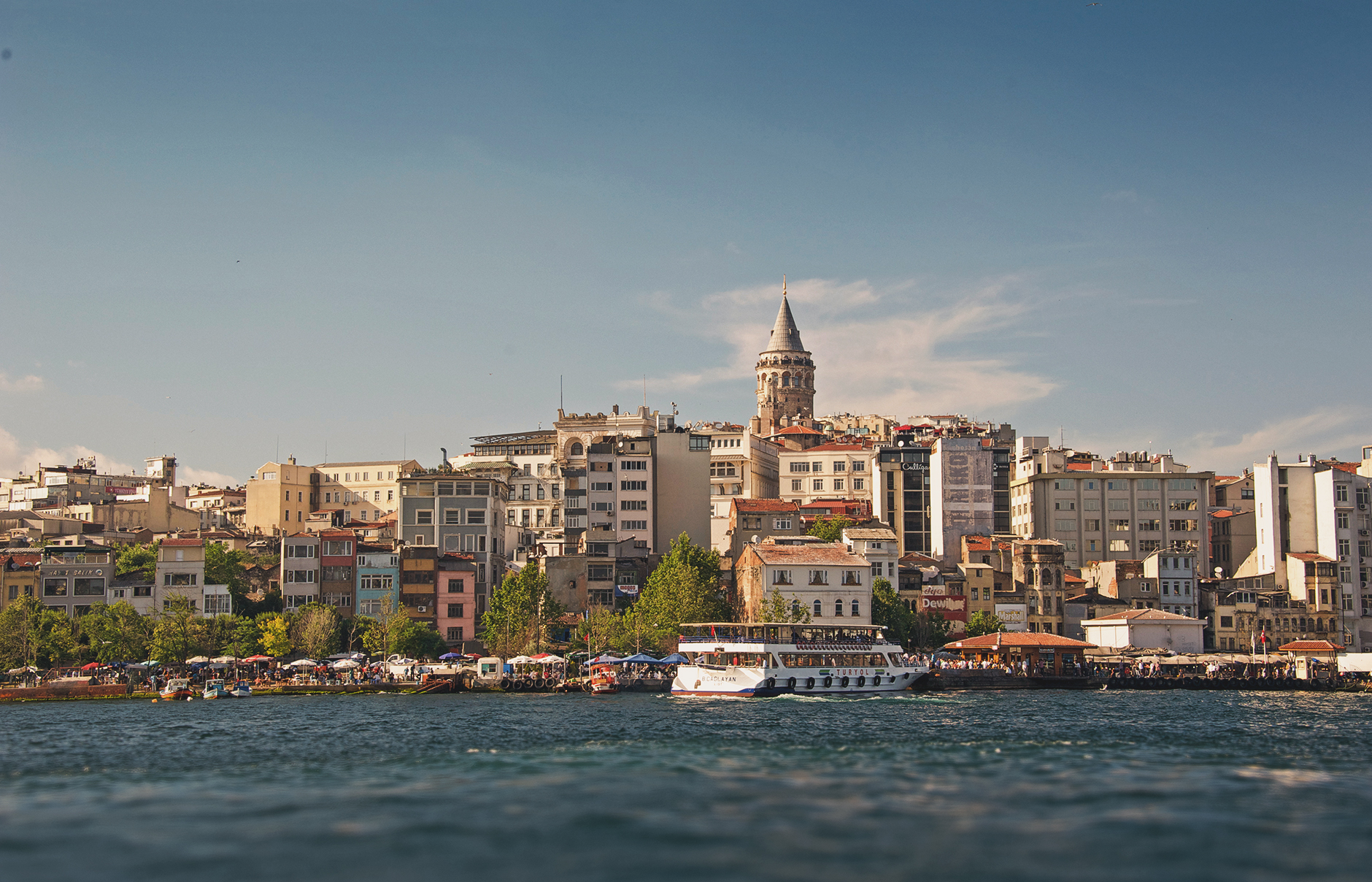
Getting there: The flight-comparison sites such as Skyscanner (www.skyscanner.com) or Kayak (www.kayak.com) will help you find the best flights and deals.
Disclosure: We may earn commissions for purchases made through links in this post.
Author: Travel+Style. Last updated: 29/10/2025
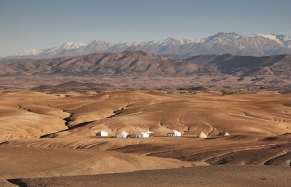
Staying at a luxury desert camp near Marrakesh
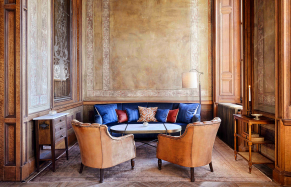
From Ottoman grand dames to uber-chic luxe newcomers